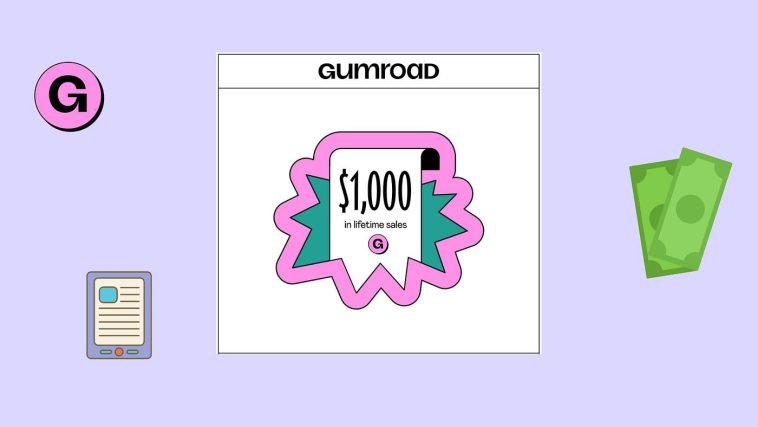If you’ve been thinking about selling your digital or physical products online, you’ve probably come across Gumroad and Shopify — two of the biggest names in the creator and eCommerce world. Both platforms promise to help you make money online, but the big question is: which one is actually more profitable?
That’s what I’ll be breaking down here — not just which platform is easier to use, but which one can genuinely help you earn more in the long run.
Why This Comparison Matters
In 2025, creators, freelancers, and small business owners are more empowered than ever to sell directly to their audiences. Whether it’s digital downloads, courses, memberships, or physical goods — the barrier to entry is incredibly low.
But here’s the thing: the platform you choose directly affects your profit margin. Transaction fees, subscription costs, marketing options, and customer control all play a role.
So, let’s take a practical look at how Gumroad and Shopify stack up — from pricing and setup to sales potential and real-world profitability.
Platform Overview
Gumroad: The Creator-Friendly Platform
Gumroad started as a simple way for creators to sell digital products — ebooks, music, courses, art, and software — without needing a website or coding skills.
You can create an account, upload your product, set a price, and share a link within minutes. It’s super straightforward, and that’s what people love about it.
However, its simplicity comes at a cost: limited customization, fewer marketing tools, and a flat transaction fee structure that eats into profits as you grow.
Shopify: The Scalable eCommerce Powerhouse
Shopify, on the other hand, is built for growth. It’s a full-fledged online store platform that lets you sell digital or physical products, manage inventory, accept payments, and even run an entire brand from one dashboard.
It’s more flexible and powerful — but also more complex and expensive to maintain than Gumroad.
So the real question becomes: is Shopify’s higher cost worth it for the extra control and features?
Pricing and Fees
Gumroad Pricing
Gumroad doesn’t charge a monthly subscription fee. Instead, it takes a 10% flat fee on every sale (plus payment processing fees from Stripe or PayPal).
For small or occasional creators, that’s great — no upfront costs, no recurring payments. But if you start earning significant revenue, those fees add up fast.
Example:
If you make $1,000 in sales on Gumroad, you’ll lose about $100 to Gumroad’s fee, plus a few more dollars to payment processors.
Shopify Pricing
Shopify starts with a $5/month Starter plan and scales up to $39/month for the Basic plan. Transaction fees range between 2.4%–2.9% + 30¢ per sale, depending on your plan and whether you use Shopify Payments.
At first glance, it looks more expensive — but once your sales volume grows, Shopify quickly becomes more cost-effective than Gumroad.
Example:
If you make $1,000 in sales on Shopify (Basic plan with Shopify Payments), you’d pay around $29 in transaction fees — a big difference from Gumroad’s $100.
Verdict:
For low sales volume: Gumroad is cheaper.
For consistent or high-volume sellers: Shopify wins on profitability.
Ease of Use
If you want something quick and no-frills, Gumroad is unbeatable. It’s basically “upload and sell.” You can have your product live in 15 minutes without touching a single line of code.
Shopify, meanwhile, takes more setup time — adding products, designing your store, customizing your domain, and setting up checkout pages. But once you’re familiar with it, it’s incredibly powerful and automated.
Verdict:
Gumroad: Best for beginners who want simplicity.
Shopify: Best for sellers who want control and scalability.
Customization and Branding
Your brand is your business identity, and how much you can customize your store matters.
With Gumroad, you get a simple sales page and a checkout link. You can add your logo, product images, and colors, but that’s about it. Customers still know they’re buying “on Gumroad.”
Shopify, on the other hand, lets you fully customize your online store — from your homepage to product pages, email templates, and checkout experience. You can use your own domain name and make your site feel entirely yours.
Verdict:
Gumroad: Minimal branding control.
Shopify: Full control and professional look.
Product Types and Flexibility
Gumroad works best for digital creators — ebooks, PDFs, videos, memberships, or pay-what-you-want products.
Shopify can do all that and handle physical products, dropshipping, print-on-demand, and subscriptions.
So if you’re planning to expand your business in the future, Shopify gives you a much bigger playground.
Verdict:
Gumroad: Great for digital-only sellers.
Shopify: Great for mixed or growing product lines.
Marketing and Growth Tools
This is where Shopify really shines.
Shopify has built-in marketing features like SEO tools, discount codes, abandoned cart recovery, upsells, and email marketing integrations. It also connects to Facebook, Instagram, Google, and TikTok for advertising.
Gumroad, while simple, doesn’t offer much beyond basic analytics and email updates. You can’t do advanced campaigns or automate your marketing directly.
If marketing is the engine of profitability, Shopify gives you the keys to a much faster car.
Verdict:
Gumroad: Limited marketing features.
Shopify: Powerful growth tools and integrations.
Payment Options
Both Gumroad and Shopify handle payments globally through Stripe and PayPal, but Shopify also supports regional payment gateways, letting you reach more customers.
Shopify also allows multi-currency pricing and automatic tax calculations — features Gumroad lacks.
Verdict:
Gumroad: Simple, but limited payment flexibility.
Shopify: Better global reach and options.
Profitability Breakdown
Let’s compare a quick profit scenario:
| Monthly Sales | Platform | Fees & Costs | Net Profit (approx.) |
|---|---|---|---|
| $500 | Gumroad | $50 (10%) | $450 |
| $500 | Shopify Basic ($39 + 2.9%) | $53.50 | $446.50 |
| $2,000 | Gumroad | $200 | $1,800 |
| $2,000 | Shopify Basic ($39 + 2.9%) | $97 | $1,903 |
As you can see, Shopify’s fixed cost becomes an advantage as your revenue grows.
At around $1,000+ in monthly sales, Shopify starts becoming more profitable than Gumroad — especially if you use marketing tools to increase conversion rates.
Which Platform Should You Choose?
Here’s my honest take:
Choose Gumroad if you’re a digital creator, artist, or author who wants something effortless and low-commitment. It’s perfect for testing ideas, selling to a small audience, or managing a few products.
Choose Shopify if you’re serious about building a business, growing an audience, and maximizing your profits. It’s an investment — but one that pays off as you scale.
And if you’re looking for a balance between the two — simplicity and marketing power — consider trying Systeme.io.
It’s an all-in-one platform that combines email marketing, sales funnels, and digital product sales without the complexity or high cost of Shopify.
FAQs
Is Gumroad free to use?
Yes, Gumroad has no monthly fees. You only pay a 10% transaction fee when you make a sale.
Can I sell physical products on Gumroad?
You can, but it’s not ideal. Gumroad doesn’t handle inventory or shipping well compared to Shopify.
Does Shopify work for digital products?
Yes! You can sell digital downloads, courses, and subscriptions easily through Shopify’s digital delivery apps.
Which platform is better for beginners?
Gumroad is simpler for beginners, but Shopify is better if you plan to grow or run multiple product lines.
Can I migrate from Gumroad to Shopify later?
Absolutely. Many creators start on Gumroad and switch to Shopify once their sales increase.
Final Thoughts
At the end of the day, profitability depends on your goals and how you plan to grow.
Gumroad gives you a fast, low-cost way to start selling, while Shopify gives you the structure and scalability to build a real business.
If you’re just starting out, Gumroad’s simplicity might be all you need.
But if you’re ready to build something sustainable — with more control over pricing, branding, and customer relationships — Shopify is the smarter long-term bet.
And remember, tools like Systeme.io can give you the best of both worlds: affordability, automation, and freedom.
So, what’s your priority — easy sales today or long-term profit and growth?





GIPHY App Key not set. Please check settings